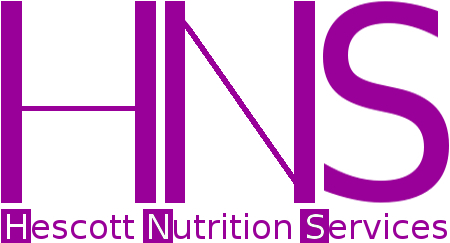.
Welcome to my blog!
.
5 Simple Steps to Achieve Your Healthy New Year's Resolutions
By Hescott Nutrition Services | posted in January 2025 | Goal Setting, Detailed Plan, Track Progress, Be Consistent, Be Kind To Yourself, Make Activity Fun.
Are you envisioning better health and wellness for yourself in the coming weeks or months? Many people focus on improving their health and wellness as part of their New Year's resolutions, like adopting a healthier diet and staying active. Perhaps you're aiming for more energy, increased strength, reduced disease risk, better weight management, or even completing that marathon. What goals are you setting for yourself in this area?
New Year's resolutions provide an opportunity to create a vision for a healthier, happier future. Setting meaningful goals with intention and optimism is the first step toward lasting wellness and fulfillment.
Want to make your resolutions a reality? There are effective strategies to help you stay focused and achieve your goals in the year ahead.
In this article, I'll share research-backed tips to help you choose your goals wisely. I’ll also guide you through a 5-step process to stay on track, develop healthier habits, and successfully achieve your objectives.
Choosing the right goal for you

The first step toward achieving your health goals is forming a clear intention to adopt healthier behaviors. In other words, setting a goal you genuinely plan to pursue is crucial—after all, a goal without true intention is unlikely to be accomplished.
Before committing to a specific health goal, consider three key factors that can increase your chances of success. Research shows that narrowing your goals using these criteria significantly boosts the likelihood of achieving them.
First, focus on just one or two goals. When we take on too many, we tend to underestimate the effort required to achieve each one. This often leads to feeling overwhelmed and having to choose between goals, which can hinder progress. By prioritizing one or two, you're more likely to see them through to completion.
Second, set short-term goals. When we look too far ahead, it can feel daunting and reduce the likelihood of success. Instead, concentrate on what you can achieve in the next few weeks or months.
Finally, revisit a healthy behavior you've practiced rather than trying something entirely new. Familiarity makes it easier to stick with a habit, increasing your chances of success.
What prevents many health goals from being achieved
Now that you've identified a healthy intention that fits your goals, it's time to create a plan to make it happen, which we'll cover in the next section. However, before building a successful plan, it's important to understand why previous plans may have fallen short. Learning from those experiences will help you succeed this time.
While setting a goal often feels straightforward, the real challenge lies in following through and taking action. This disconnect between intention and behavior is called the "intention-behavior gap."
Many New Year's resolutions go unfulfilled due to some of our natural tendencies. From an evolutionary standpoint, humans are wired to conserve energy whenever possible while maximizing energy storage during times of abundance. This can make it difficult to consistently choose healthier meals or exercise regularly, especially when survival no longer demands physical effort like finding shelter, gathering food, or escaping predators.
However, recognizing this common challenge can create a plan that reduces effort and increases enjoyment, making it easier to stick with your resolutions.
Research shows that one of the best ways to close the intention-behavior gap is to follow the five steps outlined below.
Step 1: Make the activity fun

There are many ways to reach a health goal, and research shows that the process of doing an activity matters the most. As humans, we tend to lean into activities we're attracted to and find pleasant, enjoyable, and meaningful, while we often avoid doing things we dislike.
We're more likely to repeat an activity—like cooking a particular dish or doing a specific workout—if we genuinely enjoyed the process while doing it. This includes finding enjoyment in the moments spent grocery shopping, preparing meals, exercising, or engaging in the behavior itself.
It's important to note that this differs from simply feeling good after completing an activity—like enjoying a delicious meal or experiencing the "runner's high" after a workout. If we don't enjoy the process itself, we're less likely to repeat the activity, even if we appreciate the rewards of finishing it.
This makes it crucial to choose a meaningful and enjoyable activity for you. Avoid viewing the activity as a reward or punishment. When you genuinely enjoy it, you’re more likely to make it a part of your routine.
Practical tip: Sometimes, I advise my clients to focus on adding something to their diet, which is often more motivating than removing something. For instance, adding a handful of nuts as a snack or a vegetable side dish to a meal can feel more appealing than cutting out dessert. Choose what feels enjoyable for you.
Step 2: Make a detailed plan
You're much more likely to achieve your goals by breaking them down into smaller, more manageable steps that you can consistently follow until they become habits. Create a clear plan outlining how you'll reach your goal. Consider making a checklist or jotting down the specific actions you must take for each step.
Practical tip: As part of your plan, answer these questions:
- What specific activity will you enjoy doing?
- When do you have the most energy and ability to do it?
- Where you're going to do it?
- How you're going to do it?
- What are potential obstacles to doing it, and what strategies will help you overcome them?
Step 3: Track your progress

Tracking your progress can help you stay on track with your daily or weekly activities, bringing you closer to your overall health goal. Dr. Ryan Rhodes from the Behavioral Medicine Lab at the University of Victoria explains that tracking your behavior increases the likelihood of following through.
Practical tip: You can enter your progress into an app, spreadsheet, notebook, or calendar.
Step 4: Be consistent
Scheduling your health activities regularly helps turn them into habits. Over time, consistent practices become second nature, making them easier to accomplish. As new tasks evolve into regular habits, they require less determination and motivation, gradually becoming integral to your daily or weekly routine.
Plus, as you stay consistent over time, you'll begin to see progress you can be proud of. Perhaps you're noticing increased energy and strength after your workouts.
Ideally, your new health behavior will become part of your identity over time, making it even easier to maintain regularly. For instance, a 2024 study published in Behavioral Sciences (Basel, Switzerland) found that "when individuals identify as a physically active person or exerciser, they are more likely to engage in physical activity."
When your healthy habits, like nutritious eating, physical fitness, or something else, become part of your identity, you see your goals and behaviors as integral to who you are. For example, you may shift from thinking, "I want to eat healthier" (a goal) to thinking, "I am a healthy eater" or "I am a great cook" (part of your identity).
Practical tip: How can you stay consistent until your new healthy behavior becomes a habit or part of your identity? How can you prioritize this activity and start seeing yourself as a "healthy person who eats nutritiously"?
Step 5: Be kind to yourself
Achieving a health goal can be time-consuming and requires effort, so it will not always be easy. Especially if the goal involves regular activities (daily or weekly), there may be times when things don't go as planned. When this happens, view it as a minor setback rather than an overwhelming failure. Taking any action—even a small step—is better than doing nothing.
Practical tip: When things don't go as planned, for example, if you miss a workout or don't stick to your meal plan, take a moment to acknowledge the setback. Instead of dwelling on it, remind yourself that one missed workout or meal doesn't define your progress. Then, refocus by scheduling a short, achievable workout or preparing a healthy snack for the next day to stay on track with your goal. This helps you get back on course without feeling discouraged
Conclusion
New Year's resolutions for a healthier you are worth making. The insights in this article will guide you in setting realistic, achievable goals and give you five steps to help you reach them.
Day by day and week by week, continue engaging in the enjoyable activities that keep you moving toward better health. By staying consistent and focused, you'll eventually reach your destination.
Are you ready to work with a registered dietitian nutritionist who will help you reach your health goals for 2025? Book an appointment today by going to the page, or call 347-915-3738.
